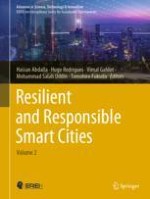2022 | OriginalPaper | Buchkapitel
Economic Feasibility of Personal Rapid Transit (PRT) Mode of Transport: A Case for Ahmedabad City, Gujarat
verfasst von : Jash Goswami, Nirav Chaudhari, Yogendragiri Goswami, Jiten Shah
Erschienen in: Resilient and Responsible Smart Cities
Aktivieren Sie unsere intelligente Suche, um passende Fachinhalte oder Patente zu finden.
Wählen Sie Textabschnitte aus um mit Künstlicher Intelligenz passenden Patente zu finden. powered by
Markieren Sie Textabschnitte, um KI-gestützt weitere passende Inhalte zu finden. powered by
